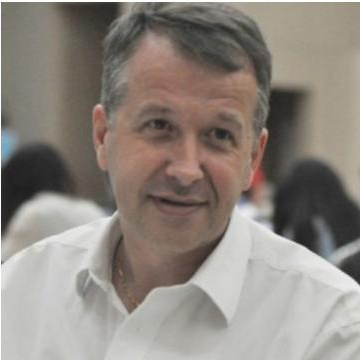Design, Planning, and Management of Urban Water Infrastructures in a Changing Climate
A special issue of Water (ISSN 2073-4441). This special issue belongs to the section "Urban Water Management".
Deadline for manuscript submissions: closed (31 May 2021) | Viewed by 3655
Special Issue Editors
Interests: climate change impact and adaptation in water resources; modelling of hydrologic extremes; watershed modelling for sustainable water resource development
Special Issues, Collections and Topics in MDPI journals
Interests: urban water management; hydroinformatics; deterministic modeling; real-time simulation; DSS; resilience
Special Issues, Collections and Topics in MDPI journals
Interests: climate change; downscaling; weather forecasting; radar rainfall nowcasting; low-impact development; eco-hydraulics; urban hydrology; hydroinformatics
Special Issues, Collections and Topics in MDPI journals
Special Issue Information
Dear Colleagues,
The majority of the world’s populations currently live in urban areas, and existing or new urban centers will continue to grow in size and economic importance. In particular, urban water infrastructures (e.g., drainage and water supply systems) have been constructed at a large scale in cities all over the world. These infrastructures have reduced the vulnerability of these cities in general but at the same time could make them more vulnerable to the increasing climate variability and extremes, partly due to the lack of consideration as to what might occur when the design criteria or the current operation and management strategies are no longer suitable in the context of a changing climate. Consequently, design professionals and urban water managers need to start accounting for these effects in the design, planning, and management of urban infrastructures in order to minimize the risks of failures of these systems and to increase the resilience of the urban environment. Research on the development of suitable approaches to limiting climate change and adapting to its impacts on urban infrastructures, especially urban water utilities, is therefore highly critical.
The key challenge would be to predict accurately the impacts of climate change on urban hydrologic processes (such as temperature, rainfall, and runoff) at the scale of the urban watershed in order to develop suitable design procedures and appropriate strategies for operation of urban water systems taking into account the legacy of existing networks and their maintenance. Another key issue is: how do we assess adaptation measures and identify the one that could best be used to develop a robust and sustainable method for the management of these systems in consideration of the future variability of urban hydrologic processes as well as the changing social and economic constraints?
The main purpose of this Special Issue is to present a collection of original research papers and review articles on the state of the art, recent advances, and emerging challenges in the design, planning, and management of urban water infrastructures in the context of climate variability and climate change. We particularly solicit papers that provide a description of the evolution of perspectives linked to new theoretical developments, advanced mathematical methods for the modeling of urban hydrologic processes over a wide range of spatial and temporal scales, advanced real-time operation and control of urban water systems, and smart water measurement and monitoring networks. In addition, we welcome papers focused on novel concepts and innovative approaches and tools.
Prof. Dr. Van-Thanh-Van Nguyen
Prof. Dr. Philippe Gourbesville
Dr. Shie-Yui Liong
Guest Editors
Manuscript Submission Information
Manuscripts should be submitted online at www.mdpi.com by registering and logging in to this website. Once you are registered, click here to go to the submission form. Manuscripts can be submitted until the deadline. All submissions that pass pre-check are peer-reviewed. Accepted papers will be published continuously in the journal (as soon as accepted) and will be listed together on the special issue website. Research articles, review articles as well as short communications are invited. For planned papers, a title and short abstract (about 100 words) can be sent to the Editorial Office for announcement on this website.
Submitted manuscripts should not have been published previously, nor be under consideration for publication elsewhere (except conference proceedings papers). All manuscripts are thoroughly refereed through a single-blind peer-review process. A guide for authors and other relevant information for submission of manuscripts is available on the Instructions for Authors page. Water is an international peer-reviewed open access semimonthly journal published by MDPI.
Please visit the Instructions for Authors page before submitting a manuscript. The Article Processing Charge (APC) for publication in this open access journal is 2600 CHF (Swiss Francs). Submitted papers should be well formatted and use good English. Authors may use MDPI's English editing service prior to publication or during author revisions.
Keywords
- urban hydrology and hydraulics
- urban runoff modeling
- urban drainage
- urban water infrastructure
- urban flood management
- urban inundation
- design storms
- real-time operation
- climate change impact and adaptation
- downscaling methods
- stochastic modeling
- statistical modeling
- smart water monitoring systems
- sponge city concept
- eco-hydraulics
- innovative water technologies
- sustainable water management







